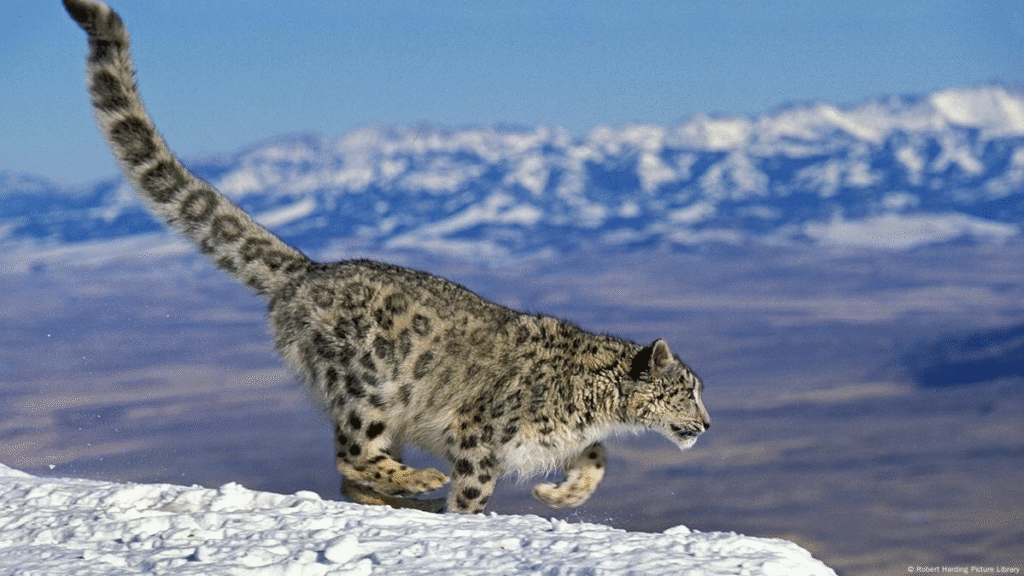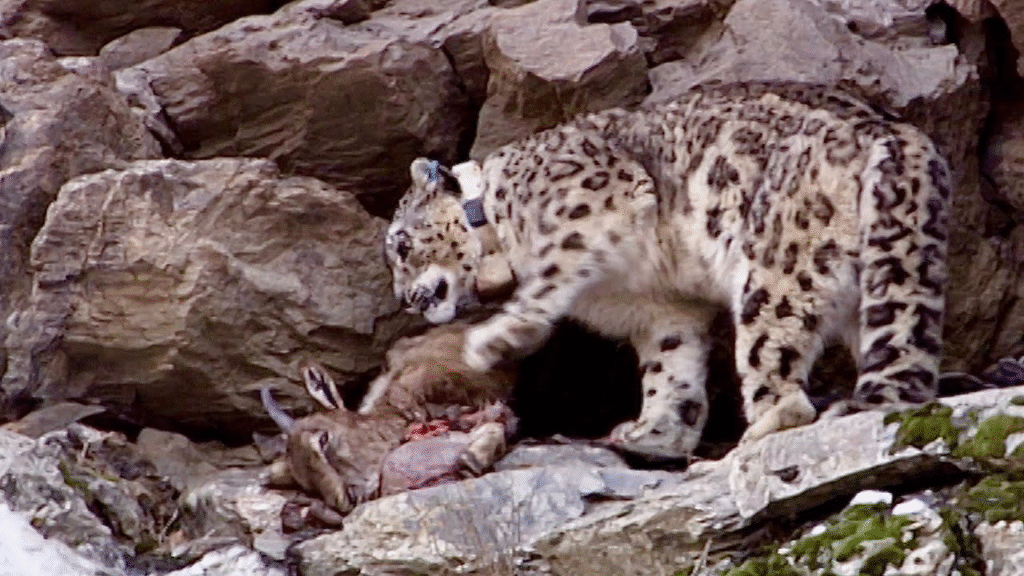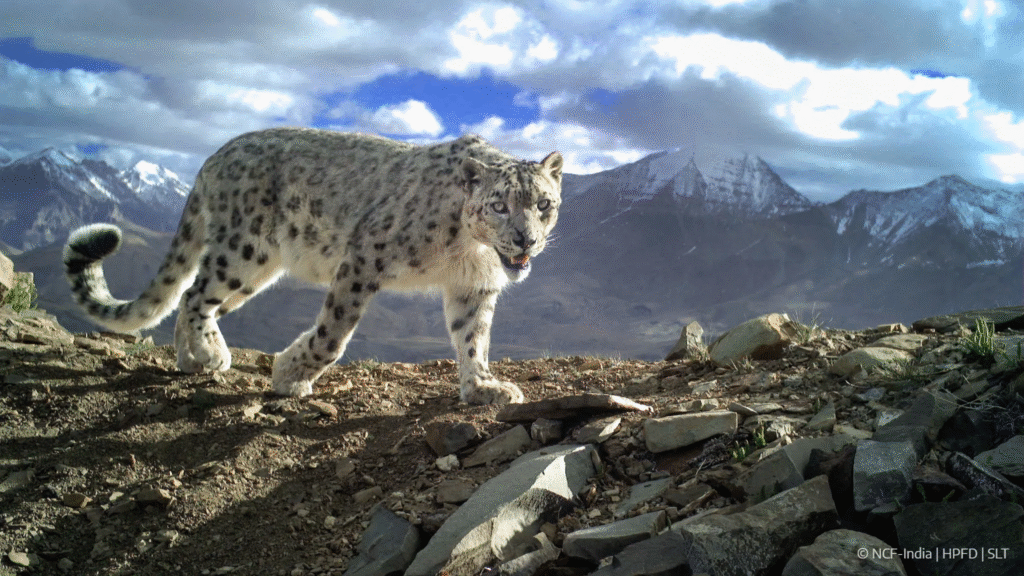Snow Leopards: The Ghosts of the Mountains
Snow leopards are likely the most beautiful and mysterious animals in the world. Snow leopards live in the cold, high, mountain ranges of Central and South Asia. They are also known as “ghosts of the mountains” since they are noiseless, mysterious, and well-adapted to the white landscape.
Here in this blog, we’re going to learn everything there is to know about snow leopards what they eat, where they are, how many still roam free, and what is endangering them. Buckle up and get ready to learn about one of nature’s most beautiful and elusive cats.
Classification of the Snow Leopard

Snow leopards are wild cats, but they are different from lions, tigers, and regular leopards. Here’s their scientific classification:
- Kingdom: Animalia
- Phylum: Chordata
- Class: Mammalia
- Order: Carnivora
- Family: Felidae (this is the cat family)
- Genus: Panthera
- Species: Panthera uncia
Even though they belong to the Panthera group (like lions and tigers), snow leopards can’t roar like them. Instead, they make softer sounds like hissing, growling, or a chuffing noise.
Quick Snow Leopard Facts (Recap)
| Feature | Detail |
|---|---|
| Scientific Name | Panthera uncia |
| Common Name | Snow Leopard |
| Size | 3.5–4.5 ft body, 3 ft tail |
| Weight | 60–120 lbs |
| Habitat | Mountains in Asia, high altitudes |
| Diet | Carnivore – wild sheep, goats, small mammals |
| Population | Around 3,500–7,000 left in the wild |
| Conservation Status | Vulnerable / Endangered in many regions |
| Top Threats | Poaching, habitat loss, human conflict |
| Lifespan | 15–18 years in the wild, up to 20 in zoos |
Where Do Snow Leopards Live?
Snow leopards live in the world’s highest and coldest mountain ranges, which are:
- The Himalayas
- The Hindu Kush
- The Pamirs
- The Tien Shan
- The Altai Mountains
They are found in 12 countries, such as Afghanistan, Pakistan, Nepal, India, China, Bhutan, Mongolia, and Russia.
They prefer rocky cliffsides, steep slopes, and high elevation at 9,800 to 17,000 feet above sea level. That’s above most folks ever reach!
How Many Snow Leopards Are Left?
Sadly, snow leopards are on the brink of extinction. Officials estimate that between 3,500 and 7,000 exist in the wild today. Perhaps there are a few hundred more that live in zoos around the globe.
They are hard to count because they are shy and live in far-off places. But the professionals are in agreement: snow leopard numbers are dwindling, and they need our help.
What Does Snow Leopard Eat?

Snow leopards are carnivores, and they hunt to eat. They are effective killers and can kill prey much larger than themselves. They have varied diets based on where they live.
Common foods include:
- Blue sheep (bharal)
- Himalayan tahr
- Ibex
- Markhor
- Marmots
- Hares
- Small rodents
- Birds
They also sometimes kill farm animals like goats and sheep when game is short. This causes problems with local farmers. Snow leopards hunt alone and prefer to stalk their prey, creep near, and then strike with awesome power and speed.
How Snow Leopards Survive Harsh Weather Conditions
They are well suited to mountain life.
- Their thick fur protects them at subzero temperatures.
- They use their long tails to balance on cliffsides and wrap themselves with their body like a blanket.
- Large paws function as snowshoes to keep them from sinking into deep snow.
- Sturdy body and short limbs help to maintain body heat.
- Large nasal cavity, enabling them to heat cold air before it enters their lungs.
Threats to Snow Leopards
Snow leopards have numerous threats. These are the largest threats:
1. Habitat Loss
Since there are more constructions of roads, mines, and buildings in the mountains, the snow leopards are deprived of their habitats where they need to live and hunt.
2. Poaching
They are hunted to obtain their beautiful fur and bones. They have their body parts trafficked into black markets.
3. Human-Wildlife Conflict
When snow leopards attack livestock, some of the herders retaliate and kill them. They are viewed as pests, not as protected animals, by most communities.
4. Climate Change
Climate warming causes snow to melt and changes mountain environments. Climate warming makes it harder for snow leopard prey species to find food.
Is Snow Leopard Protected?

In fact, the majority of countries have laws that protect snow leopards. They are being preserved globally too.
Some organizations dedicated to assisting snow leopards: Snow Leopard Trust
- WWF (World Wildlife Fund)
- Panthera
- UNDP Snow Leopard Conservation Program
They do research, set up camera traps, interact with local communities, and create safe habitats to conserve snow leopards.
Can You See a Snow Leopard in the Wild?

It is extremely rare to catch a glimpse of a snow leopard in the wild. They are not easily seen, are unobtrusive, and inhabit secluded regions. But ecotourism in places like Ladakh (India) and Mongolia allows someone to see one.
Most people prefer to accompany wildlife guides who are aware of where and when to find them. Winter is usually the best time to trace them since their paw prints are easier to identify in snow.
Alternatively, if you can’t do that, you can also see snow leopards in zoos that are involved in breeding programs. Some zoos also have live webcams!







